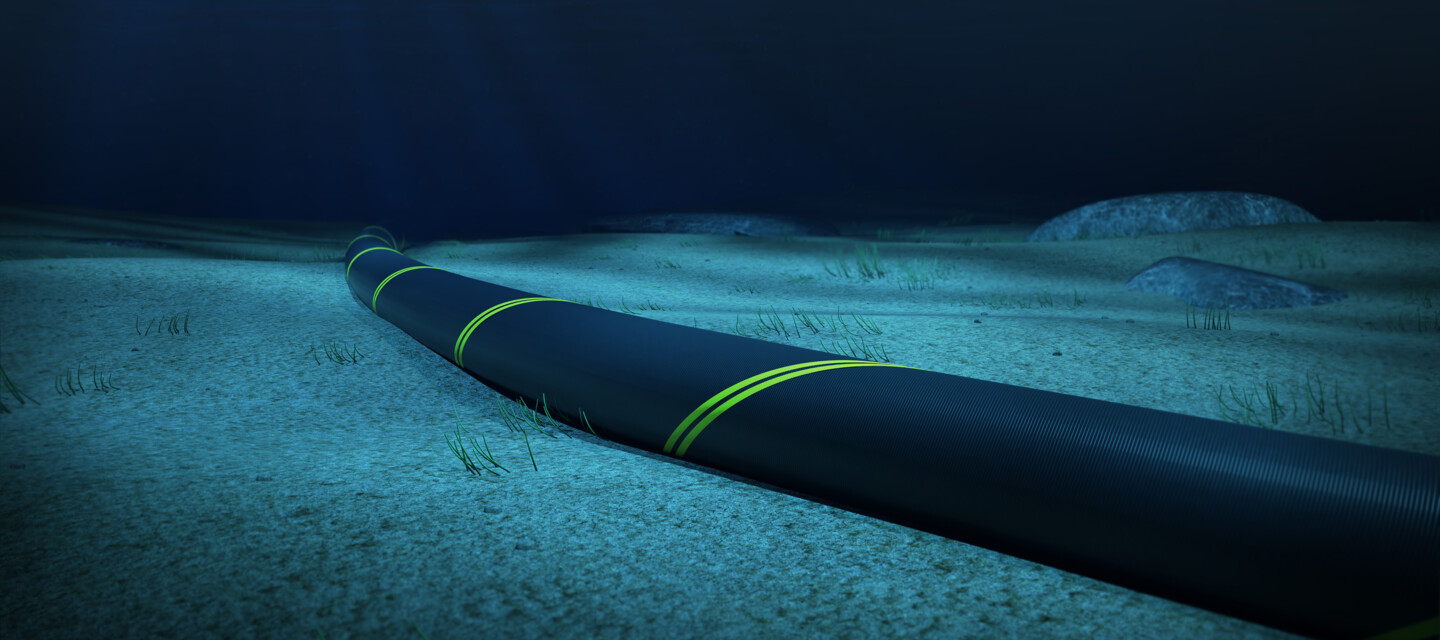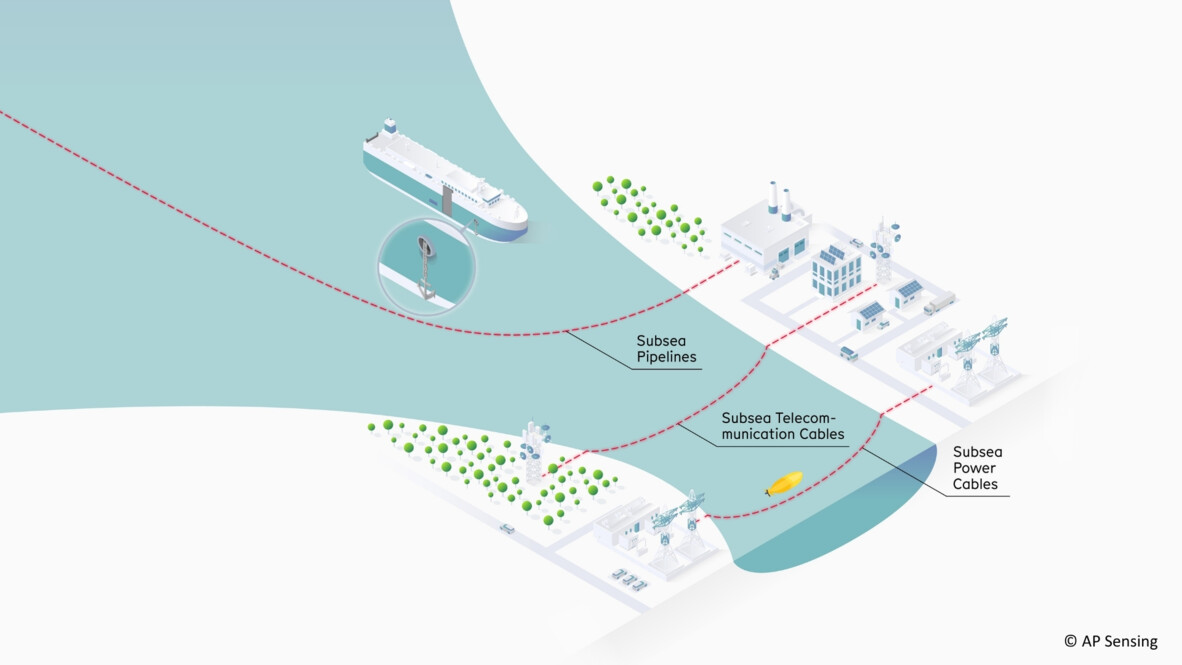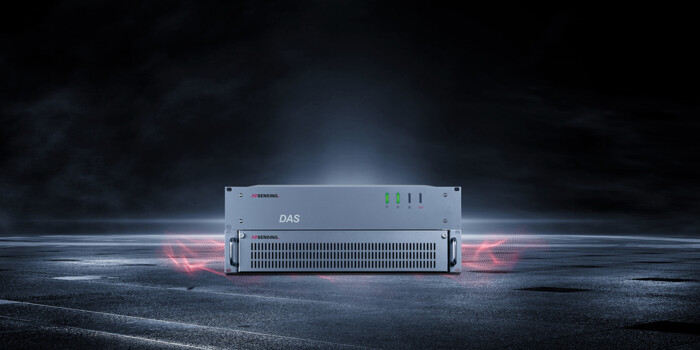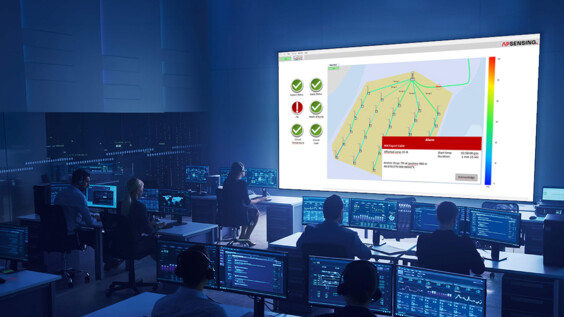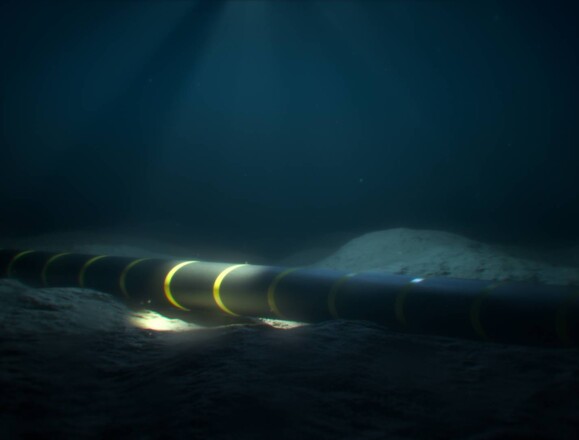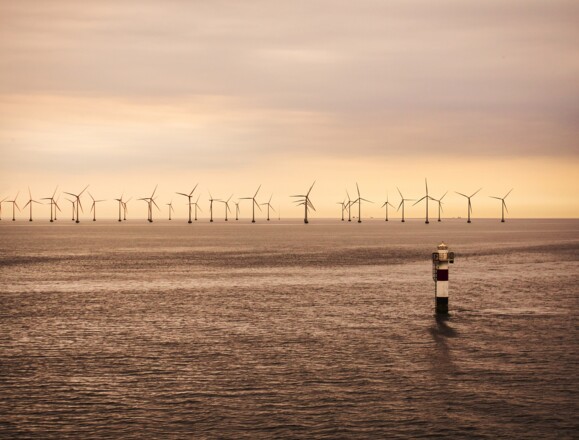Subsea cables and pipelines are the hidden arteries of our modern world, supporting offshore energy generation, global internet connectivity, and the secure transport of critical data and energy. As the backbone of critical underwater infrastructure (CUI), these assets are vital not only for operational continuity but also for national security and economic resilience.
However, these high-value systems, which include subsea power transmission, subsea pipelines and telecommunication cables, are increasingly exposed to a range of threats. Accidental damage from fishing activity, vessel anchoring, and construction is responsible for nearly 70% of all subsea cable faults. Meanwhile, geopolitical tensions and the rise of hybrid threats, such as sabotage and espionage, demand more advanced monitoring solutions than traditional systems can deliver.
Continuous Monitoring of Critical Subsea Infrastructure
Distributed Acoustic Sensing (DAS) offers a transformative solution. By converting existing fiber optic cables within subsea networks into thousands of real-time acoustic sensors, DAS enables continuous, long-range monitoring of acoustic and vibrational activity. This approach empowers operators to detect anchor drops, vessel movement, diver activity, and mechanical disturbances before they escalate into costly outages or security incidents.
Designed for long-distance subsea infrastructure, DAS provides unmatched spatial and temporal resolution over hundreds of kilometers without any modification to the cable respectively fiber itself. It is a scalable, proactive, and very cost-efficient technology for protecting today’s most critical undersea infrastructure.
Most nations have increased requirements for physical security of these assets. Requiring a higher level of physical protection as well as state-of-the-art subsea security solutions. The EU e.g. has issued the Critical Infrastructure Resilience directive, which had to be nationalized by all member states by end of 2024. Operators need to take technical, security and organizational measures to enhance their resilience against the above-mentioned threads. Sectors include Energy, Digital Communication Infrastructure, Water and Transportation.
AP Sensing's Monitoring Solution
AP Sensing’s Distributed Acoustic Sensing (DAS) technology enables real-time acoustic monitoring along the entire length of subsea pipelines, power transmission lines and telecommunication cables. By turning standard optical fibers into dense acoustic sensor arrays, DAS provides unmatched visibility into underwater activities. It detects vessel movement, anchor drag, diver activity, and other mechanical disturbances that threaten critical underwater infrastructure (CUI).
This fiber optic sensing solution enables the physical protection of subsea assets without requiring modifications to existing cables. Installed at the cable termination point, the DAS interrogator transforms unused fibers into virtual microphones, offering precise localization and classification of acoustic events across tens or even hundreds of kilometers. Enabling operators to act instantly on detected threads.
Our DAS technology is used for:
- Export and inter-array power cables in offshore wind farms
- Subsea interconnector and transmission systems
- Coastal and harbor monitoring
- Global and regional telecommunication cables
- Underwater and offshore pipelines
Whether securing a nation's data flow or the transmission of renewable energy: DAS supports operators in protecting their most critical subsea assets proactively and with precision.
Event Detection
Event detection using Distributed Acoustic Sensing provides high-resolution, real-time awareness of potential threats to both subsea power, pipelines and telecom cables. By transforming standard optical fibers into thousands of virtual microphones, DAS ensures continuous acoustic monitoring along the entire length of your critical underwater infrastructure (CUI). Key capabilities include:
Detection and Localization of Third-Party Interference (TPI)
Accurately identify vessel movement, anchor drops, fishing activity, and diver operations near the cable.
Tracking of Underwater Threats
Real-time identification of dynamic activities, such as unauthorized diver presence or seabed interaction, using machine learning-based acoustic classification.
Detection of Mechanical Disturbances and Impacts
Recognize and localize abnormal events with high spatial accuracy, even at a distance from the cable.
DAS helps operators move from reactive response to proactive protection, ensuring the resilience, availability, and security of critical subsea assets.
Distributed Acoustic Sensing (DAS)
Distributed Acoustic Sensing (DAS) provides continuous, high-resolution monitoring of underwater infrastructure by detecting acoustic vibrations that indicate potential threats. Using coherent Rayleigh scattering, DAS converts standard optical fibers—already embedded within power, telecom cables or running alongside pipelines—into dense arrays of virtual microphones or thousands of sonars / hydrophones. This enables operators to identify and localize events such as vessel movement, anchor drags, or underwater interference with unprecedented spatial and temporal accuracy.
Enhancing Security with DAS
DAS technology excels at detecting physical impacts, dynamic movements, and other mechanical disturbances near the cable route. From ship activity and fishing gear to diver operations and seabed interactions, DAS enables real-time threat detection for proactive protection of critical underwater infrastructure (CUI).
By analyzing frequency and amplitude characteristics, DAS also supports advanced signal classification and distinguishes, for example, a passing ferry from a jet ski or a dragged anchor. These capabilities are further enhanced through machine learning, enabling automated vessel tracking and acoustic anomaly detection. DAS even responds to subtle acoustic signatures such as cable tapping or scooter emissions, making it a vital tool for detecting unplanned activity and potential sabotage.
With no need for in-sea hardware or cable modification, DAS offers a scalable, non-intrusive, and cost-effective approach for safeguarding both power transmission and telecom cables. The system delivers actionable insights to ensure system integrity, reliability, and long-term resilience. Overall offering real time maritime situational awareness.

Expanding Our Monitoring Solutions
SmartVision Software for DAS
The platform provides an easy-to-use graphical interface to review live data, replay historical acoustic activity, and track dynamic events like vessel crossings, anchor drags, or diver activity. DAS data is mapped along the fiber route, with color-coded overlays indicating acoustic energy, signal strength, and event classifications.
Operators can define zones of interest along the cable such as port approaches, cable landings, or high-risk bottlenecks and assign custom alarm thresholds based on acoustic signatures. Events are automatically classified using integrated AI algorithms and flagged for review or action. Historical data and trend analyses support forensic investigations, performance monitoring, and predictive maintenance.
SmartVision integrates seamlessly into existing security or SCADA systems, providing critical insights for infrastructure protection, operational continuity, and regulatory compliance.
Advantages of AP Sensing's Monitoring Solution
Proactive Protection of Critical Underwater Infrastructure
Distributed Acoustic Sensing (DAS) offers a highly effective and scalable method to protect subsea power and telecom cables without the need for additional hardware or costly subsea installations. By transforming existing optical fibers into real-time acoustic sensor arrays, DAS enables continuous surveillance over long distances, even in challenging underwater environments.
AP Sensing’s DAS solution delivers key benefits by detecting threats before damage occurs, preventing costly outages and reducing the need for emergency repairs. It enhances the overall resilience of critical underwater infrastructure (CUI), supporting both energy security and global communications stability.
With precise localization of vessel movements, anchor drags, diver activity, and other external disturbances, DAS helps operators optimize maintenance strategies, respond faster to anomalies, and extend the lifespan of their subsea assets. This proactive approach leads to fewer disruptions, lower operational costs, and improved long-term network reliability.
Advantages of DAS for Subsea Cable Monitoring
- Single-ended monitoring of both telecom, power cables, and pipelines
- Long-range performance: coverage of over 100+ km per channel
- No repeaters or powered offshore components needed
- High accuracy in event classification and fault localization
- Ideal for remote or politically sensitive subsea regions
With a proven track record and continued innovation, AP Sensing offers a completely integrated, end-to-end solution made in Germany. Our team works together with you to select the right combination of technologies to fit your requirements. We also provide onsite services, hotline and online support, maintenance and product training.
Find all our brochures, application flyer, product flyers, videos and further case studies in our media library.
Frequently Asked Questions
What does DAS monitor in critical subsea infrastructure?
DAS detects acoustic signals and vibrations caused by events such as anchor drags, fishing activity, or cable strikes—alerting operators in real time.
Can DAS be used for both power and telecom cables?
Yes. DAS uses existing optical fibers, making it suitable for all types of subsea cables—including HVDC power lines and high-capacity fiber-optic telecom cables as well as telecom cables running next to pipelines.
Does DAS require hardware along the route?
No. DAS is a passive sensing technology that works from a single shore-based interrogator unit—no additional offshore electronics or repeaters are needed.
